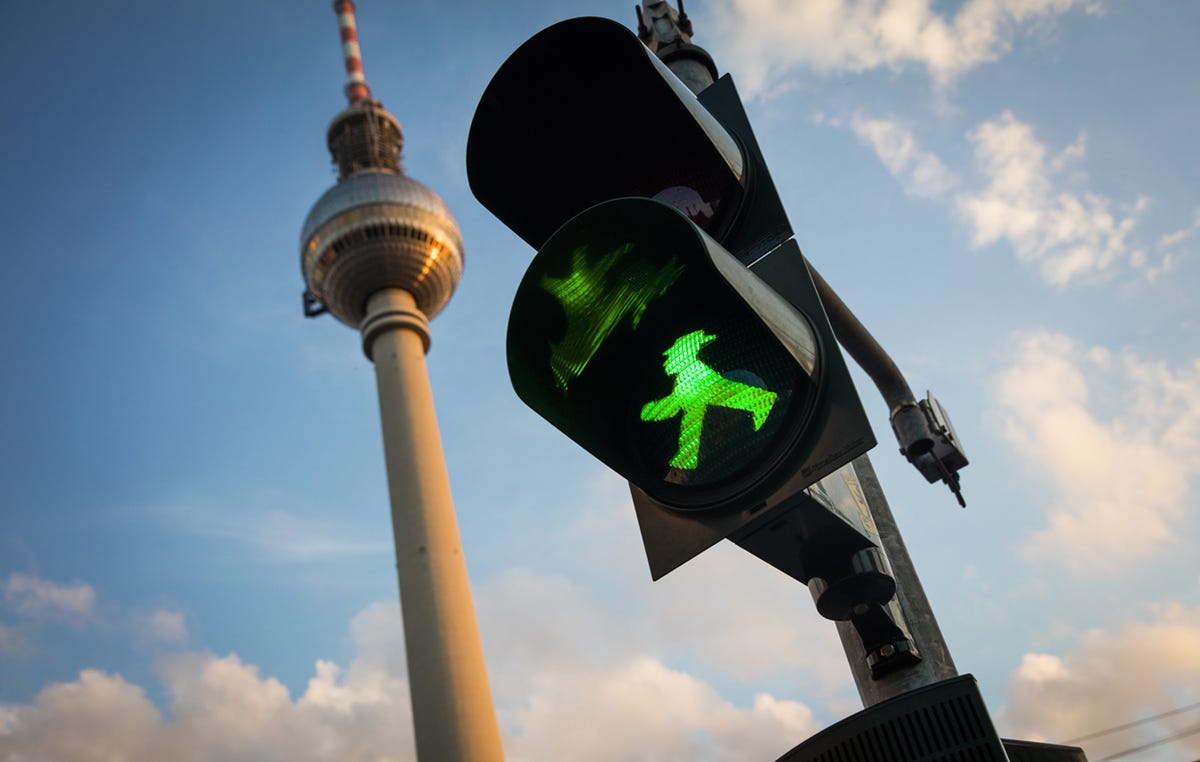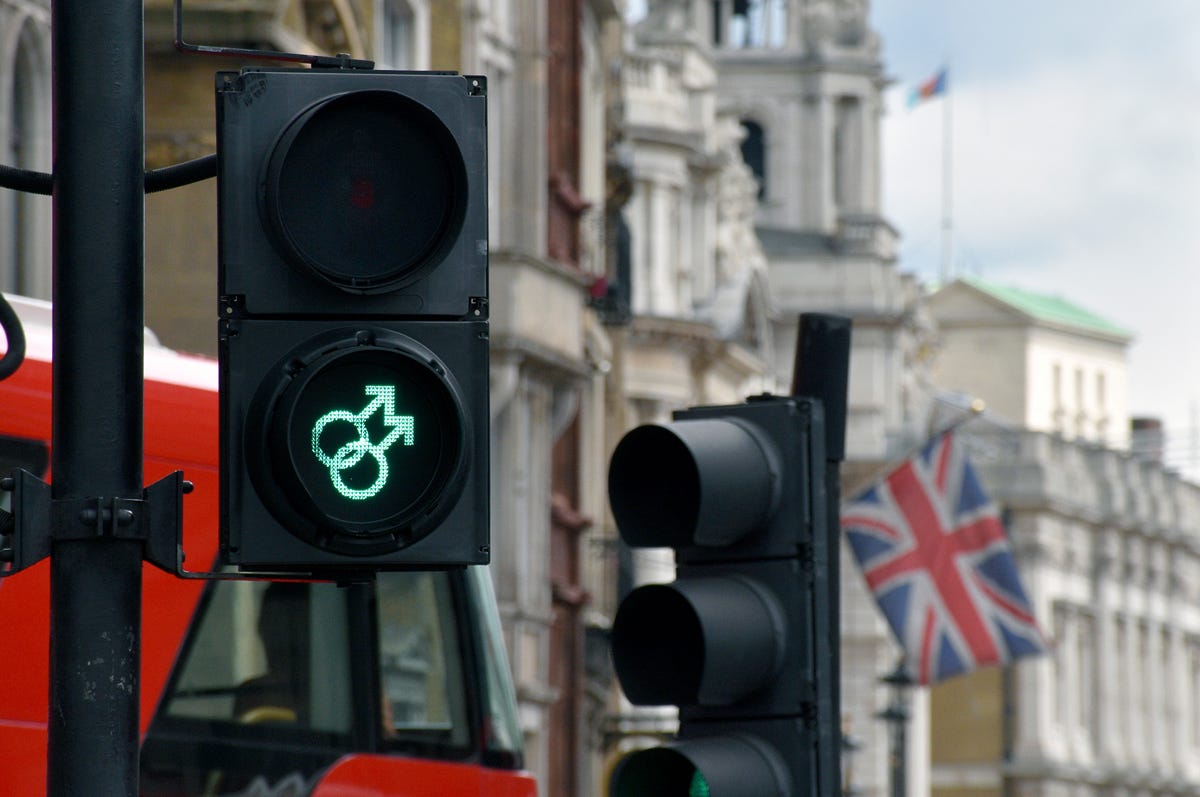Issue 22: the enduring, charismatic traffic light men of eastern Berlin
How an accessible, scientifically based design became a cult figure and survived German reunification.
When pedestrian traffic lights began to be developed in countries across the world from around the 1930s-50s, they tended to take one of two forms:
text based, featuring words like ‘don’t walk / walk’ or ‘wait / walk’
stick-simple people icons standing and walking
In 1960s East Germany, psychologist and designer, Karl Peglau, wasn’t satisfied.
As a designer, he thought the lights were too small and too weak, particularly for people with visual impairments.
And as a psychologist, he understood the emotional effect of symbols. People were more likely to trust and obey someone (or something) that they liked or even resembled.
So, he designed a new set of pedestrian traffic light figures: men with a pug nose, a hat, and the beginning of a paunch. They had charisma – and therefore likeability – but were also functional – a larger area meant more light and greater visibility, thus greater safety for pedestrians.
Peglau’s designs had three core principles:
appealing to all pedestrians because they are colourful, homely, and fun
the fat, outspread arms of the red man function like a barrier, a command to stop
the striding legs of the green man are dynamic, like an arrow, indicating permission to go
It took eight years from Peglau’s original design submission to the German Democratic Republic (GDR) until the first lights were installed in East Berlin in 1969, at the intersection of Unter den Linden and Friedrichstraße.
The ampelmännchen (traffic light man) was born, and subsequently applied to pedestrian traffic lights across the GDR capital.
So loved – and crucially, trusted – was the design, that it was used in road traffic safety campaigns for children. It featured in cartoons and comic strips, and on badges and keyrings awarded to children for their traffic safety knowledge.
And true to Peglau’s intention, a 2013 study by Jacobs University in Bremen found the iconic East German design was more effective than its traditional West German equivalent.
In an interview with Deutsche Welle (DW), Claudia Peschke, a postdoctoral fellow at Jacobs University, said: "Our study shows that the East German ampelmännchen have not just become iconic symbols of [nostalgia] but are also giving their West German counterparts a run for their money when it comes to signal perception."
But the fall of the Berlin Wall in 1989 meant the beginning of the eradication of many symbols of East German life, including the ampelmännchen. In an effort to remove evidence of the division of Berlin, the government prepared to replace the portly ampelmännchen with the more serious and svelte West German pedestrian traffic symbol.
It was around this time that Berlin – particularly in the east – was experiencing a revival of the alternative art and culture scene. And it was also around this time that designer Markus Heckhausen began to see the dismantled East Berlin traffic lights as a source of artistic material. He rescued the glass and turned them into lamps. His creations proved immediately popular, even attracting media attention. This attention led to an invitation for Heckhausen to meet Peglau.
Peglau described his figures as “symbols standing against the unreasonable post-fall mentality of getting rid of things. They were originally – and will hopefully remain – figures of the street, psychologically thought-out symbols of the rules of behaviour for pedestrians in street traffic”.
The ampelmännchen came to symbolise the emerging East German nostalgia movement. A campaign was launched to lobby the government to “rescue the ampelmännchen” and was successful.
Today, ampelmännchen remains a charming symbol on the streets of eastern Berlin, as well as a cult brand. Heckhausen – with Peglau’s blessing and involvement – founded the Ampelmann company in 1991, opening its first pop-up shop on the 40th anniversary of Peglau’s design creation, in 2001. It now has six stores across the German capital, selling a range of products from clothing and bags to homeware and accessories.
Before his death in 2009, Peglau reflected on the enduring popularity of his creation:
“Presumably, it is due to their special and almost indescribable aura of human sociability and warmth that so many people feel pleasantly touched and addressed by these symbolic figures, and that they find in them a chunk of honest identification with history, which gives the ampelmännchen the right to represent the positive aspects of a failed social order.”
Related: In 2016, Transport for London installed temporary LGBTQ+ inspired traffic lights at 50 pedestrian crossings near Trafalgar Square, to coincide with Pride month celebrations.
The designs included various gender symbols as well as two men and two women holding hands and forming a heart.
The lights proved so popular, Transport for London confirmed they’re here to stay.









